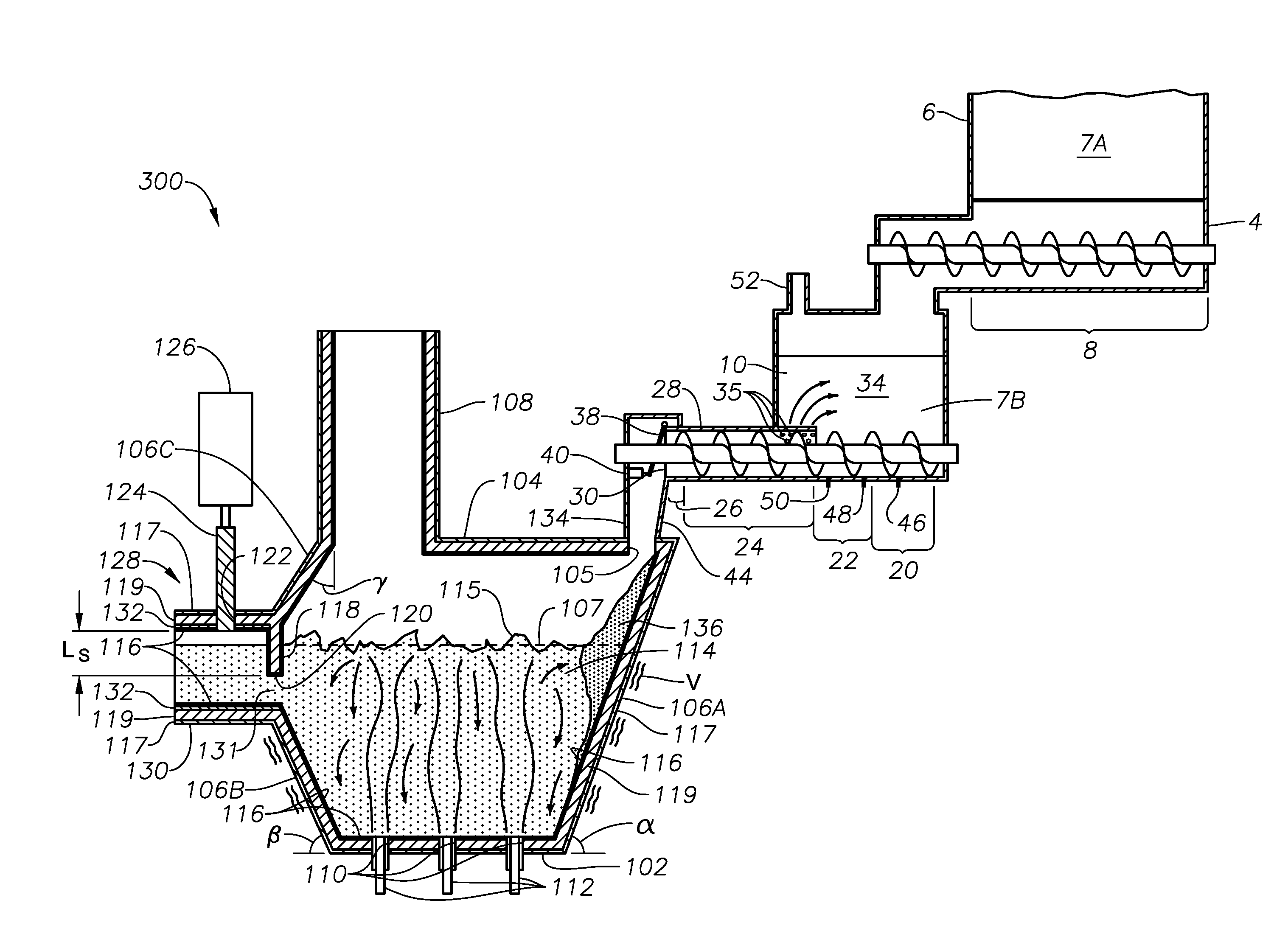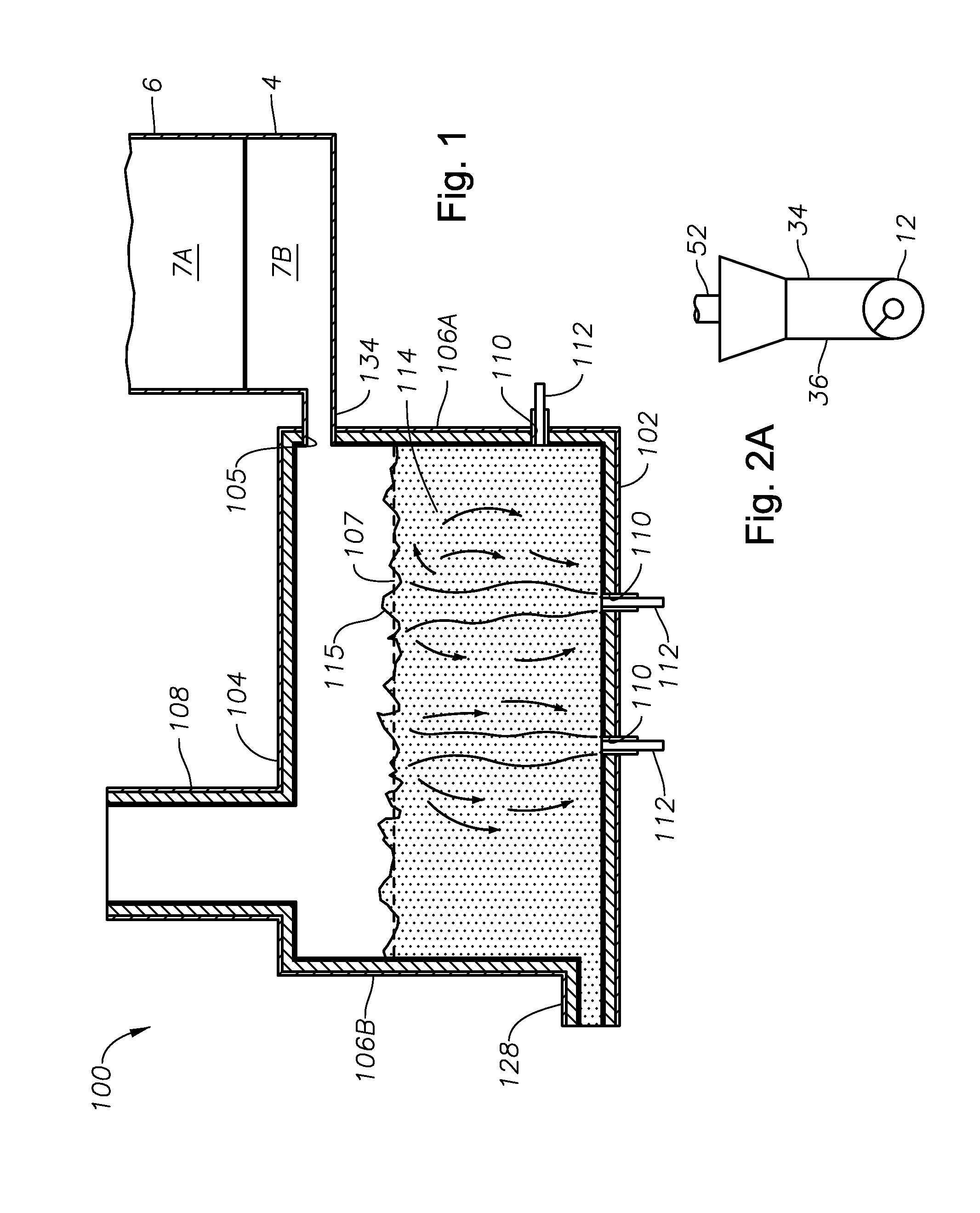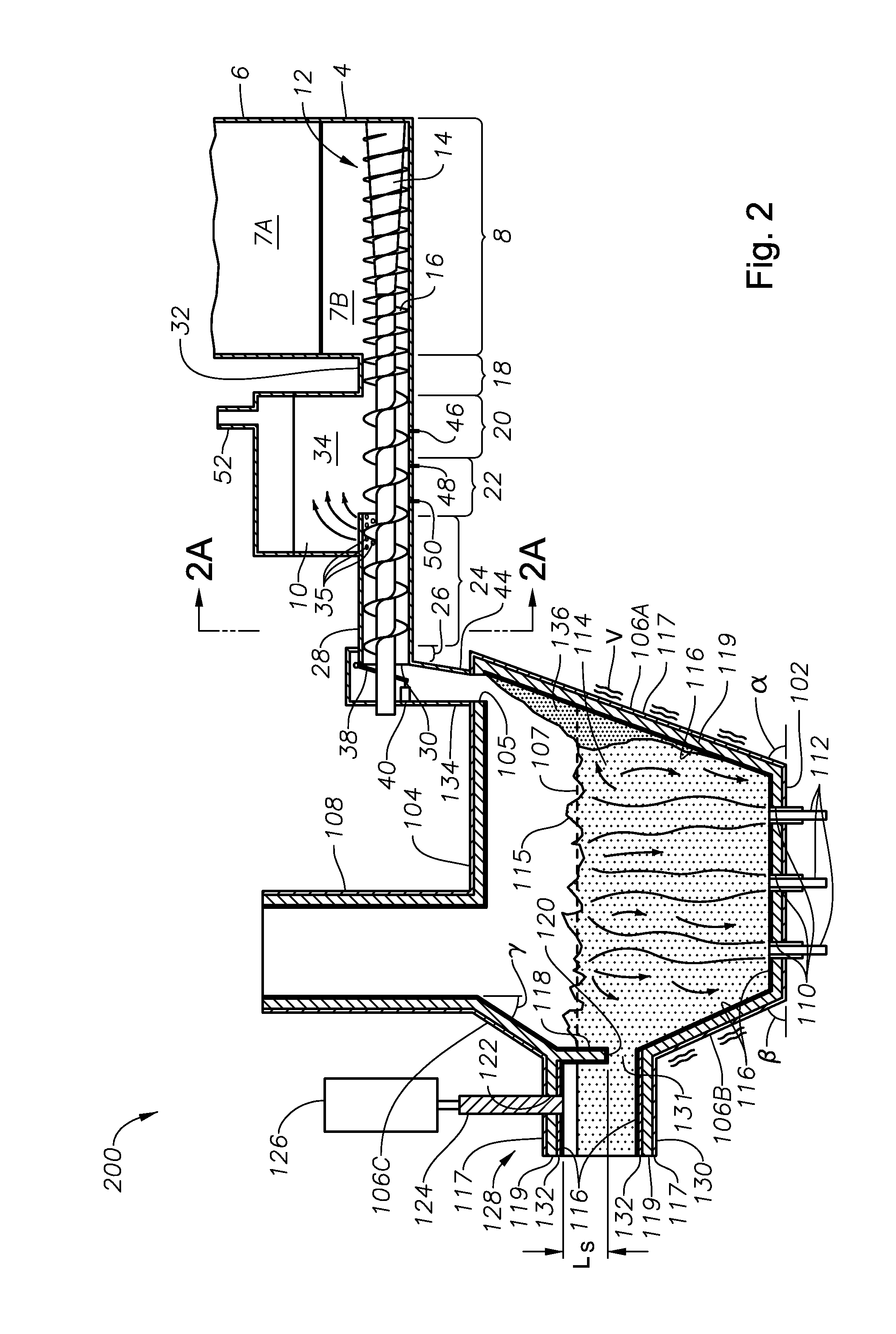Processes for producing molten glasses from glass batches using turbulent submerged combustion melting, and systems for carrying out such processes
a technology of molten glass and submerged combustion melting, which is applied in the field of combustion furnaces, can solve the problems of violent turbulence of molten material or partially molten material, difficult to feed batch to a turbulent submerged combustion melter, and failure to recognize or have previous solutions, so as to reduce or eliminate batch loss in the submerged combustion melter
- Summary
- Abstract
- Description
- Claims
- Application Information
AI Technical Summary
Benefits of technology
Problems solved by technology
Method used
Image
Examples
example
[0105]Lab scale testing with E-glass batch materials was used to demonstrate that increased E-glass batch bulk density results in lower batch loss. To understand the factors that affect the amount of batch loss in an SCM, the apparatus in FIG. 8 was designed and constructed to replicate the types of air velocities inside an SCM and exhaust system. The concept of the apparatus was to charge (drop) a known amount of batch material into an air steam moving at a known velocity in the opposing direction of the batch falling. By measuring the amount of batch material that reached the target box at the bottom of the apparatus, the amount of lost material could be calculated. Losses were defined as all material that did not reach the target box, excluding any material that failed to enter the airstream. The large diameter tubing was constructed of clear plastic (such as polycarbonate) while the smaller diameter tubing was a small-diameter vacuum hose. The vacuum-producing device used was a ...
PUM
| Property | Measurement | Unit |
|---|---|---|
| Temperature | aaaaa | aaaaa |
| Pressure | aaaaa | aaaaa |
| Diameter | aaaaa | aaaaa |
Abstract
Description
Claims
Application Information
 Login to View More
Login to View More - R&D
- Intellectual Property
- Life Sciences
- Materials
- Tech Scout
- Unparalleled Data Quality
- Higher Quality Content
- 60% Fewer Hallucinations
Browse by: Latest US Patents, China's latest patents, Technical Efficacy Thesaurus, Application Domain, Technology Topic, Popular Technical Reports.
© 2025 PatSnap. All rights reserved.Legal|Privacy policy|Modern Slavery Act Transparency Statement|Sitemap|About US| Contact US: help@patsnap.com



